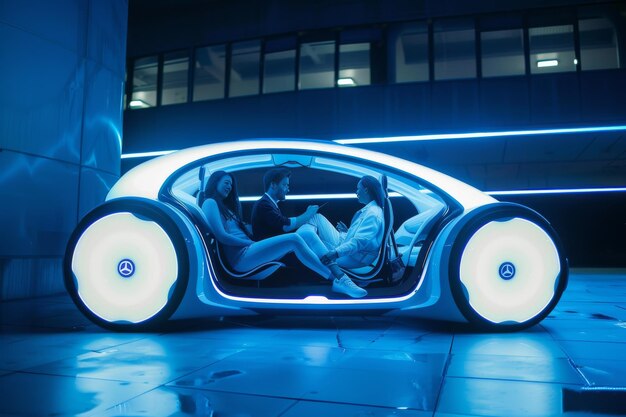
The Kia EV3 is on its way, and it might just become Kia’s most popular electric car yet. It’s anticipated to be Kia’s most affordable EV to date, still packed with top-notch features, advanced technology, and a decent driving range. However, it will have to face competition from other Kia electric models, notably the well-loved EV6.
The EV6 marked the start of Kia’s newest generation of electric vehicles, designed to showcase Kia’s vision for electric cars with its sleek and distinctive design and impressive driving range. The EV6 is also quite speedy, especially the EV6 GT model.
So, how do the EV3 and EV6 stack up against each other? What are the key differences, and which one meets your needs better? Let’s put them head-to-head.
The EV3 and EV6 have quite different designs, and your preference might lean towards one over the other. The EV6 features a unique look with slanted headlights at the front and a long light bar at the back. Its design is sleek and stands out compared to other Kia models, so much so that you might not guess it’s made by the same company as the EV3.
The EV3, on the other hand, follows a design trend seen in Kia’s larger EV, the EV9. It has a boxier build with split headlights and taillights. Kia describes its front design as a “Tiger Face,” a look familiar if you’ve seen other modern Kia vehicles. Though the EV3 is attractive, it’s perhaps a bit less unique than the EV6. It also features a rear-hung back door, making it easier to load items like car seats.
Despite its SUV appearance, the EV3 is actually smaller than the EV6. The EV3 measures 169 inches in length, 73 inches in width, and stands 61 inches tall. In contrast, the EV6 is 185 inches long, 74 inches wide, and 61 inches high, making it longer and slightly wider, though both cars share the same height.
Design preference is subjective, making this category a tie.
Interior setups in the EV3 and EV6 are also quite similar. Both vehicles offer a dual display at the front for infotainment and instrument monitoring. The EV6 supports CarPlay and Android Auto, and while Kia hasn’t officially confirmed these features for the EV3, it’s likely given their inclusion in other new Kia models.
The interior feel and styling are similar as well. Both cars aim for a spacious and light atmosphere, featuring recycled materials. Based on my experience with the EV6, it’s very comfortable, so if the EV3 mirrors this, it should be comfy too.
Overall, both cabins look modern and well-equipped, tying them in this category.
When it comes to performance, the EV3 and EV6 start to show their differences. The EV3 is designed as a budget-friendly option, which means it won’t be as powerful as the EV6. The EV3 is available only in a single-motor variant, reaching 0 to 60 mph in about 7.5 seconds, which is decent but not especially quick.
The EV6, however, focuses more on performance. Its base model offers both single-motor rear-wheel-drive and dual-motor all-wheel-drive options. The rear-wheel-drive EV6 Wind model, for example, boasts 225 horsepower and accelerates from 0 to 60 mph in 7.2 seconds, slightly faster than the quickest EV3. The top-end EV6 GT is even more impressive, with 576 horsepower and a 0 to 60 mph time of around 3.2 seconds.
For those seeking performance, the EV6 is the superior choice.
We don’t have complete details on the EV3’s range yet. It will come with two battery options: 58.3 kWh and 81.4 kWh. Kia estimates a range of up to 600 kilometers (around 373 miles) based on the WLTP, though a more realistic figure might be closer to 300 miles. The lower end might hover near 200 miles.
In contrast, the EV6’s range is better documented. The single-motor version can go up to 310 miles. Dual-motor versions offer less, with ranges varying from 282 miles (Wind AWD) to 206 miles (EV6 GT).
The EV3 uses a 400-volt architecture, unlike the 800-volt system in the EV6, meaning it won’t charge as quickly. The EV3 can charge from 10% to 80% in about 31 minutes, whereas the EV6 can achieve the same in just 18 minutes with a 350kW DC fast charger.
Given the unclear range of the EV3, we’ll call that part a tie, but for charging speed, the EV6 wins.
If you’re considering which to buy right now, the EV6 is the only option currently available. The EV3 will launch in Korea in July, followed by a European release later in the year. It may not hit the U.S. market until early 2025, if at all, and pricing is yet to be confirmed but expected between $30,000 and $40,000.
The EV6, starting at $42,600, is available for purchase right now, making it the immediate choice if you need a car today.
The EV3 is not available yet, but its expected lower price could make it an attractive option when it’s released. This aspect is a tie.
In conclusion, the EV6 is generally the better car, offering superior performance, size, and faster charging capabilities. However, the EV3 could become appealing due to its lower price, depending on its final cost once it becomes available.